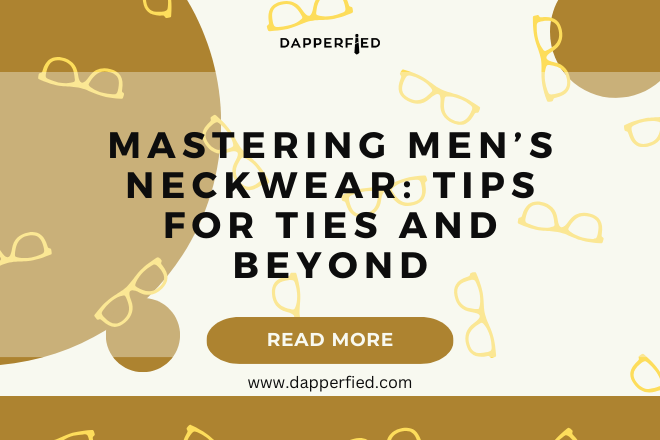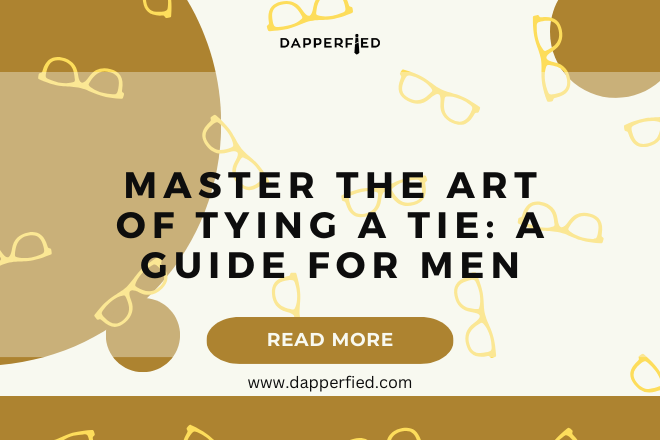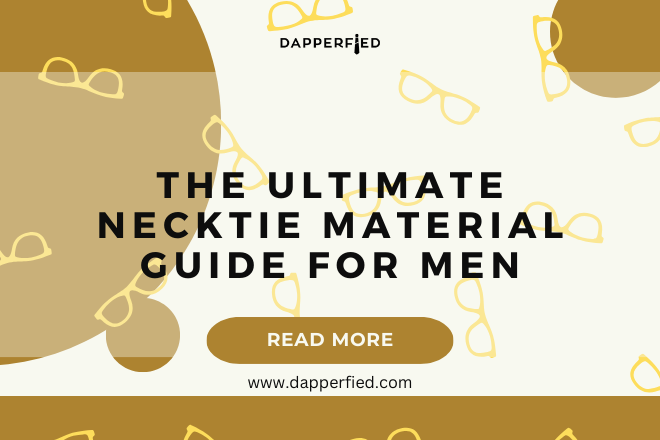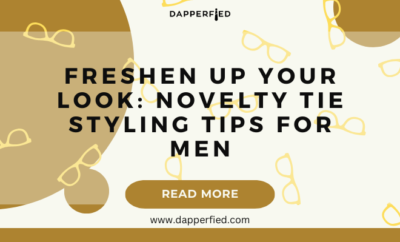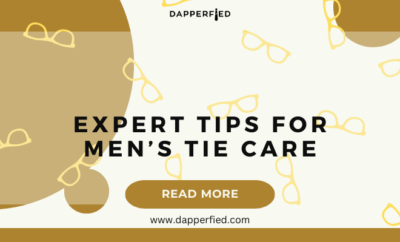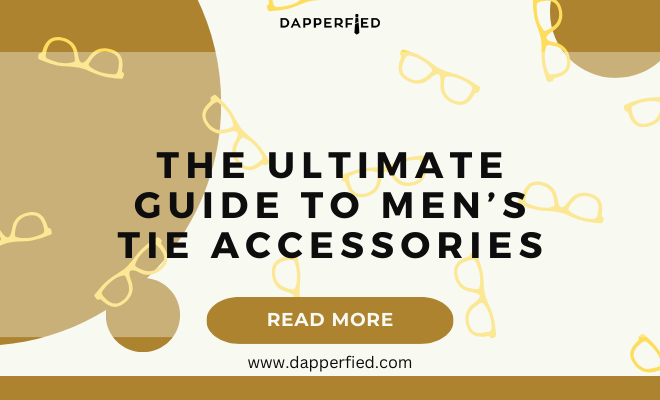
Men's Style
The Ultimate Guide to Men’s Tie Accessories
Tie accessories have a long and rich history that dates back to the 17th century. The modern necktie as we know it today originated from the cravat, a piece of cloth worn around the neck by Croatian mercenaries during the Thirty Years’ War in the 17th century. This style of neckwear gained popularity in France and was eventually adopted by the upper class in England. As the cravat evolved, so did the need for tie accessories to accompany it. In the 19th century, tie pins and tie clips became popular as a way to keep the cravat in place and add a touch of elegance to men’s attire. These accessories were often made of precious metals and adorned with gemstones, reflecting the wealth and status of the wearer.
In the early 20th century, the necktie as we know it today became the standard neckwear for men, and tie accessories continued to evolve alongside it. The tie bar, also known as a tie clip, became a staple accessory for men’s formal wear, serving both a functional and decorative purpose. As fashion trends changed, so did the styles of tie accessories. In the 1960s and 1970s, bold and colorful tie bars and clips were popular, reflecting the vibrant and expressive fashion of the era. Today, tie accessories continue to be an essential part of men’s fashion, with a wide variety of styles and designs to choose from, ranging from classic and understated to bold and modern.
Key Takeaways
- The history of men’s tie accessories dates back to the 17th century, when Croatian mercenaries wore cloth around their necks as part of their uniform, which caught the attention of Parisians and eventually evolved into the modern necktie.
- Different types of tie accessories include tie bars, tie clips, tie pins, and pocket squares, each serving a different purpose and adding a unique touch to an outfit.
- When choosing the right tie accessory for your outfit, consider the formality of the occasion, the color and pattern of your tie, and the overall aesthetic you want to achieve.
- Properly wearing and styling tie accessories involves positioning them correctly on the tie and ensuring they complement the rest of your outfit without overpowering it.
- The best tie accessories for different occasions vary, with formal events calling for classic and understated options, while casual settings allow for more playful and colorful choices.
- DIY tie accessories can be made using simple materials like fabric, glue, and basic sewing skills, allowing for customization and personalization.
- Tips for caring for and maintaining tie accessories include storing them properly, cleaning them as needed, and handling them with care to ensure they remain in good condition for future use.
Different Types of Tie Accessories
There are several types of tie accessories that can add a touch of sophistication and style to a man’s outfit. Tie bars, also known as tie clips, are one of the most popular and versatile tie accessories. They are designed to keep the tie in place and prevent it from shifting or flapping in the wind. Tie bars come in various lengths and designs, from classic silver or gold bars to more modern and decorative styles. Another popular type of tie accessory is the tie pin, which is a decorative pin that is attached to the front of the tie to add a touch of elegance and flair. Tie pins come in a wide range of designs, from simple and understated to bold and eye-catching.
Tie chains are another type of tie accessory that adds a touch of vintage charm to a man’s outfit. They are designed to attach to the button of a dress shirt and keep the tie in place, while also adding a decorative element to the ensemble. Bow ties also have their own set of accessories, including bow tie clips and bow tie pins, which serve a similar function as their necktie counterparts. Finally, pocket squares are another essential accessory for men’s formal wear. While not directly related to ties, pocket squares add a pop of color and sophistication to a suit or tuxedo ensemble, making them an important accessory to consider when putting together a formal outfit.
How to Choose the Right Tie Accessory for Your Outfit
When choosing a tie accessory for your outfit, it’s important to consider the overall style and formality of the ensemble. For formal occasions such as weddings or black-tie events, classic and understated tie accessories such as silver or gold tie bars or pins are a safe choice. These accessories add a touch of elegance without overpowering the outfit. For more casual or creative settings, you can opt for bolder and more decorative tie accessories, such as colorful or patterned tie bars or pins. It’s also important to consider the color and pattern of your tie when choosing a tie accessory. A simple rule of thumb is to match metals with metals – if you’re wearing a gold tie bar, opt for gold cufflinks and other gold accessories.
The size and shape of the tie accessory should also be taken into consideration. A slim tie bar is best suited for narrow ties, while wider ties can accommodate larger tie bars or clips. When wearing a bow tie, consider using a bow tie clip or pin to keep it in place and add a touch of sophistication to your ensemble. Ultimately, the key is to choose a tie accessory that complements your outfit without overpowering it. It should enhance your overall look and add a touch of personality and style without being distracting.
How to Properly Wear and Style Tie Accessories
| Aspect | Details |
|---|---|
| Types of Ties | Necktie, Bowtie, Ascot |
| Length | Should reach the belt buckle |
| Width | Standard width is 3-3.75 inches |
| Styles | Four-in-hand, Windsor, Half-Windsor |
| Materials | Silk, Polyester, Wool |
| Color Coordination | Match with shirt or suit color |
| Accessories | Tie clip, Tie bar, Pocket square |
Properly wearing and styling tie accessories is essential for achieving a polished and put-together look. When wearing a tie bar or clip, it should be placed between the third and fourth buttons of your dress shirt, securing both the tie and shirt together. The tie bar should be parallel to the ground and not too tight or too loose – it should hold the tie in place without causing any wrinkles or creases. When wearing a tie pin, it should be placed through both the front and back layers of the tie, securing it in place without causing any damage to the fabric.
When styling tie accessories, it’s important to consider the overall balance and proportion of your outfit. If you’re wearing a patterned or textured tie, opt for a simple and understated tie accessory to avoid clashing or overpowering the look. Conversely, if you’re wearing a solid-colored tie, you can experiment with bolder and more decorative tie accessories to add visual interest to your ensemble. When wearing a bow tie, ensure that the bow tie clip or pin is placed symmetrically on both sides of the bow for a balanced and polished look.
The Best Tie Accessories for Different Occasions
Different occasions call for different types of tie accessories. For formal events such as weddings, galas, or black-tie affairs, classic and understated tie accessories such as silver or gold tie bars or pins are the best choice. These accessories add a touch of elegance without overpowering the formal attire. For business or professional settings, simple and sleek tie bars or clips in silver or gold are ideal for adding a touch of sophistication to your outfit without being too flashy.
For more casual or creative occasions, you can experiment with bolder and more decorative tie accessories such as colorful or patterned tie bars or pins. These accessories allow you to showcase your personal style and add a pop of personality to your ensemble. When attending themed events or parties, you can have fun with novelty or themed tie accessories that reflect the theme of the occasion. Ultimately, the best tie accessories for different occasions are those that complement your outfit while allowing you to express your personal style.
DIY Tie Accessories: How to Make Your Own

If you’re feeling crafty and creative, making your own tie accessories can be a fun and rewarding project. One simple DIY tie accessory is a fabric flower lapel pin, which can add a touch of color and flair to your outfit. To make a fabric flower lapel pin, you’ll need fabric scraps, a needle and thread, and a lapel pin backing. Cut out several circles of fabric in varying sizes, stack them on top of each other, and sew them together at the center to create a layered flower shape. Attach the lapel pin backing to the back of the fabric flower using hot glue or fabric glue, and allow it to dry before wearing it on your lapel.
Another DIY tie accessory idea is creating your own custom pocket square. You can use fabric scraps or old shirts to create unique and personalized pocket squares that complement your outfits. Simply cut out a square piece of fabric, fold the edges inwards to create clean lines, and hand-stitch them together for a polished finish. You can experiment with different fabrics, patterns, and colors to create pocket squares that add a pop of personality to your suits or blazers.
Tips for Caring for and Maintaining Your Tie Accessories
Proper care and maintenance are essential for keeping your tie accessories looking their best. For metal tie bars or clips, regularly polish them with a soft cloth to remove any tarnish or fingerprints and keep them looking shiny and new. Store metal tie accessories in a jewelry box or pouch to prevent them from getting scratched or damaged. For fabric-based tie accessories such as pocket squares or fabric lapel pins, gently hand wash them with mild detergent and lay them flat to dry to maintain their shape and color.
When not in use, store your tie accessories in a designated drawer or box to prevent them from getting tangled or damaged. Avoid exposing metal tie accessories to harsh chemicals or moisture, as this can cause them to tarnish or corrode over time. If you have novelty or themed tie accessories, handle them with care to prevent any delicate details from getting damaged or broken. By following these tips for caring for and maintaining your tie accessories, you can ensure that they remain in top condition for years to come.

In conclusion, tie accessories have a long history dating back centuries and continue to be an essential part of men’s fashion today. From classic tie bars and pins to more modern and decorative styles, there are countless options to choose from when it comes to accessorizing your ties. When selecting a tie accessory for your outfit, consider the formality of the occasion, the color and pattern of your tie, and the overall balance and proportion of your ensemble. Properly wearing and styling tie accessories is key to achieving a polished look, so be sure to follow guidelines for placement and proportion when incorporating them into your outfits. Whether you’re attending formal events, business meetings, or casual gatherings, there are tie accessories suitable for every occasion that allow you to express your personal style while adding sophistication and flair to your outfits. And if you’re feeling creative, consider making your own DIY tie accessories for a personalized touch. With proper care and maintenance, your tie accessories will remain in top condition for years to come, allowing you to elevate your style with ease and confidence.
If you’re looking to elevate your style, consider adding a sleek black watch to your ensemble. Dapperfied has a great article on the appeal of men’s black watches, discussing how they can add a touch of sophistication to any outfit. Whether you’re dressing up a casual look or adding the finishing touch to a formal outfit, a black watch is a versatile accessory that every man should consider. Check out the article here for more insight on this timeless accessory. And while you’re at it, why not pair your new watch with a stylish tan suit? Dapperfied also has a great article discussing the appeal of men’s tan suits, offering tips on how to style this classic look. Check it out here for some fashion inspiration.
FAQs
What are some common tie accessories for men?
Some common tie accessories for men include tie bars, tie clips, tie pins, and pocket squares.
What is the purpose of a tie bar?
A tie bar is used to keep the tie in place and prevent it from swinging or moving around. It also adds a stylish touch to the overall look.
How should a tie bar be worn?
A tie bar should be worn between the third and fourth buttons of a dress shirt, and should be clipped to both the tie and the shirt for a secure fit.
What is the difference between a tie bar and a tie clip?
A tie bar is typically shorter and thinner, while a tie clip is longer and wider. Both serve the same purpose of keeping the tie in place.
What is the purpose of a tie pin?
A tie pin is used to secure the tie to the shirt, preventing it from moving around. It also adds a decorative element to the tie.
How should a tie pin be worn?
A tie pin should be placed through the tie and the shirt, securing both layers together. It should be positioned horizontally and parallel to the ground.

What is the purpose of a pocket square?
A pocket square is a decorative accessory that is worn in the breast pocket of a suit or blazer. It adds a pop of color and style to the overall look.
How should a pocket square be folded?
There are various ways to fold a pocket square, including the straight fold, one-point fold, and puff fold. The choice of fold depends on personal preference and the overall look desired.

